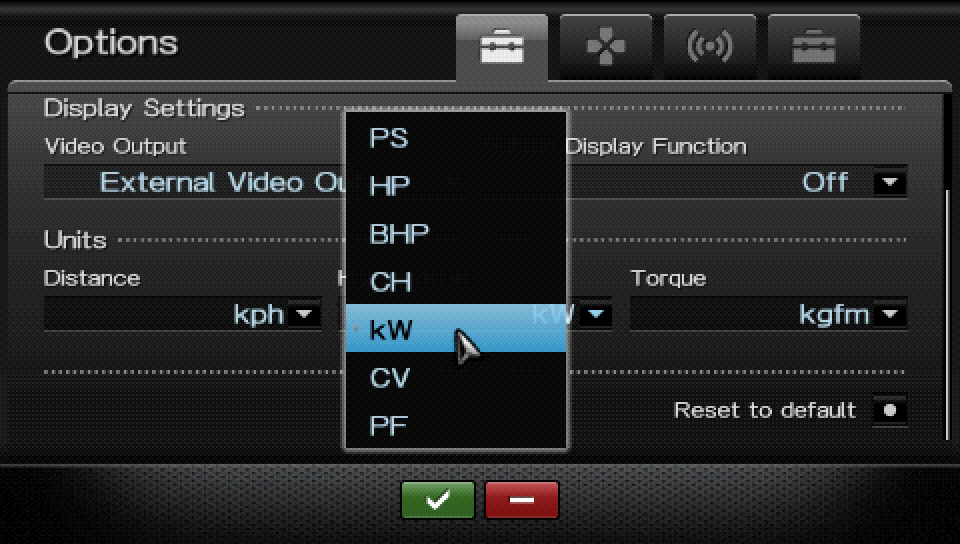The vast majority of cell phones use a single-cell Li-Ion battery, so their capacities can be directly compared using mAh. Laptops almost always contain multi-cell Li-Ion batteries, so their capacity cannot be directly compared using mAh (e.g. a 4S battery rated for 2500mAh has more energy than a 3S battery rated for 3000mAh).
So why don’t we use Wh for phones too? Simply because manufacturers would rather advertise a battery size of five thousand mAh (wow, so much capacity!) instead of 19 Wh.
The same issue happens with portable USB battery packs - they’re all advertised in mAh even though they use a wide variety of chemistries and cell configurations internally. What manufacturers do is take the total Wh of the pack and convert it back to the equivalent mAh of a single-cell Li-Ion. It’s annoying, and I really wish they would just use Wh directly.
But why not advertise in mWh? 19000 is bigger than 5000
I don’t think they know about metric prefixes, Pip.
Imagine if the marketing people discovered that they could advertise that it has 19 million uWh (in Doctor Evil voice). Don’t say it too loudly though, someone at Apple might hear.
deleted by creator
That would be ideal, but I think at this point there’s just too much marketing momentum using mAh, and switching to mWh would be too confusing to consumers. But yeah, I agree, mWh is definitely the most appropriate unit to use.
five thousand mAh
Isn’t that just 5 Ah though
Yeah, but it’s 5 billion nAh.
I spent billions of nanodollars on lunch today
Well I spent trillions of pico dollars.
And 19000 mWh. I’d rather have 19000 of something rather than 5000. I feel cheated and no amount of telling me it’s exactly the same will change my mind.
Yeah but then you don’t get to say thousand
deleted by creator
Goodbye dream of knowing how many times my car can charge my phone.
Generally Li-ion (3.7V nominal) batteries were used so they could just base it off of current usage rather than power usage and you could get a decent idea comparing between smart phones.
Laptop batteries tend to use an operating voltage of multiple times that (2-cells would use 7.4V-ish, 3-cell would be 10.8 to 11.4V nominal, 4-cell would be 14.8V and so on), but the number of cells can vary wildly per model, so Wh is easier to compare numbers between laptops.
EE Here, I like this answer.
mAh is a bigger number than Wh and looks better on packages.
Wait until you hear about µAh. This is the one secret the engineering team doesn’t want the marketing department to know.
Lets use coulomb hours or electron-per-second-hours.
LOL, electrons per second hour is such a cursed unit, it’s going to take some effort to make it worse.
Why are we are waiting for the second hour? Why the hell don’t they make something with electrics per first hour?
The machine blinks on and off. You’re lucky they didn’t pick the third hour.
And mWh is even bigger.
You wanna talk about inflating numbers?

Can I add a follow up question: Why don’t normal batteries have any useful measurements on them, at least in the UK anyway, not sure about elsewhere. Rechargeable batteries will have an Ah rating but normal AA or AAA etc will just say “Ultimate” or “Advance” etc, like why can’t we just have an Ah or Wh or even just a standardised rating based on a fixed current discharge or something? It’s infuriating that in 2023 I’m buying something with know way of quantifying its content other than the inference of the product name.
If you mean non-rechargeables, all batteries of the same technology are really the same in capacity. Doesn’t matter if you buy an expensive brand or the cheapest bulk store brand, the difference is a couple percent and depends more on the age of the cell and how it was handled.
Just get cheapest store-brand alkaline if you must, but really best avoid altogether and use rechargeable.
Alkaline batteries range from 3-5 Wh (https://docs.google.com/spreadsheets/d/16UTSIimjNXl9OP0cFWmLtISe7LHXUng_S6tyzWrjCuU/edit#gid=2136035052), Zinc batteries are around 0,6Wh
The reason phone vendors can advertise capacity is because the load (the phone) is a known quantity. They made the phone, so they can reliably estimate the battery’s capacity based on average use by that phone.
Similarly, power bank manufacturers can do the same, because the load is controlled by them. The USB port might only provide 5V at 1.5A or 3A - whatever the power bank manufacturer put in - so they can reliably estimate how much current over time the battery can provide.
But makers of alkaline batteries don’t have that knowledge. They have no way of knowing if you’re going to put them into a kid’s toy that pulls only 20mA, or a DC motor for a rotisserie that pulls 1A. So they can’t possibly provide you any measure of Ah that is going to satisfy all consumers. If they did, they’d open themselves up to legal problems for making misleading claims about their product.
I don’t find that to be a particularly compelling argument though. If you go to buy a lead acid battery for solar usage, for example, they give you the capacity based on a 20-hour discharge (or, 1/20th C rate). The same could absolutely be done for primary batteries
Lead acid self-discharges at a much, much higher rate than alkaline, though. It’s the reason alkaline batteries can live on a supermarket shelf for so long without losing any significant capacity.
deleted by creator
Lol. Legal term.
Hence Watt-hours
Yeah, but that would require consumers do the mental math. I can see plenty of stupid complaints being made because people misunderstand the fundamental difference.
*customers, please. I don’t consume batteries.
This shit should be all standardised around [micro|milli|Ø|kilo|tera]joules. mAh isn’t even energy, it’s charge!
This shit should be all standardised around [micro|milli|Ø|kilo|tera]
Agree with you there.
joules
But- would instead, suggest using watts instead of joules. In general, its quite well suited to electrical devices.
Have a 1,000w / 1kw device? Its going to draw 1,000wh of energy, or 1kw.
Although, the units are extremely similar. wh/kwh are defined as energy per hour, while a joule, is energy (in watts) per second.
Frankly I’d be fine with watt-hours too, as long as consistent. It isn’t like converting one into another is hard (1kWh = 3.6MJ).
My point for joules is twofold:
- Due to the name, plenty people confuse power (watts) with energy (watt-hours). Joules avoid this.
- You can also convert other “esoteric” units of energy to joules, for better comparison across fields. Such as “food calories” (i.e. kilocalories; 1kcal = 8.4kJ)
wh/kwh are defined as energy per hour, while a joule, is energy (in watts) per second.
It’s power times hours and power times seconds respectively. (“Per” is usually understood as division)
That said you’re right that they’re similar. The difference is only if you’re using hours or seconds to measure time.
I want my batteries energy capacity measured in calories, just in case I swallow it
Fries, chocolate and large batteries are verboten. Keep your diet!
Media will start comparing them to cheesburgers.
Hey, number of standard cheeseburgers would still be an effective standard. All we want is one common unit.
It’s really not that much weirder than horsepower for engines.
The same exact reason ISPs sell bandwidth in Mb/s, instead of the proper unit.
Quite simply, 500Mbit/s sounds a lot more impressive than 0.5Gbps or 62.5MB/s.
It leads to a lot of confusion for customers though, who think their Internet connection is 8 times faster than it is.
Welcome to marketing.
But bits is the correct unit.
Speed is measured in bits, storage is measured in Bytes (unless you are Microsoft)
Your argument you be like saying 'why say a car that can do Kilometres per hour when it is really going cubic kilometres per hour.
Not really, since bits and bytes represent the same dimension of data.
Your argument is like saying “why say a car can do km/h when it is really m/s”
Laptops predate cell phones in mainstream use. When laptops started, there were a variety of battery types in use with no standard charging voltage so Wh was the fair way to compare.
Cell phones have pretty much always been 3.7v lithium so mAh is a fair comparison and gives a bigger number than Wh.
You could just put it in mWh. BAM, bigger number.
3000 mAh * 3.7V = 11.100 mWh Much bigger. Much better.
I hate mAh… it’s absolutely no information how much energy is inside without taking the voltage into account. If you use directly (m)Wh, you directly have the amount of energy the battery can contain.
The thing is, batteries are measured in Ah, and not Wh. That’s because their voltage changes all the time, and is mostly the same for the same kind of chemistry, and also because for most of their uses, the current is the actually useful information.
Phones are just using the standard metric. It’s laptops that are weird.
They both tell the same story, but one requires extra information you don’t have. You don’t say that the latest i3 pulls 6 Amps, you say it pulls 65 Watts. Also the voltage does change as the battery discharges, that’s why you use the nominal voltage of the pack. mAh is also not a current
We aren’t using joules because…?
At least we’re not talking about cars because…

I wouldn’t be able to stop. 🚗
More like 4-4.4v when fully charged. They should actually list the voltage as well as it affects longetivity
Eidt: voltage
Most phone batteries are rated for 4.3v
Most people have low end phones though.
And those are rated around 3.7v
I think you misunderstand nominal voltage and fully charged voltage. 3.7v is the nominal voltage for a lipo battery. 4.2v is the standard fully charged voltage. However, phone batteries are rated at 4.3v.
Wh is a unit of energy, Ah is a unit of electric charge, basically how many physical electrons passed by.
The voltage of a battery goes down gradually as it is discharged, so getting an accurate value for total energy dissipated is very complicated, as this varies greatly with the discharge profile and other physical factors like the age/health of the battery.
The one thing that stays constant is the amount of electric charge a battery can provide. If it’s old, the voltage of that charge will be lower and go down quicker, but it will be the same total charge.
I agree from a consumer point of view, joules would be a friendlier unit, however it is also a lot easier to game. Electric charge is a much more definite unit in an electrical engineering sense.
If any of what I said is confusing please ask me to clarify, I’m assuming a basic level of electronic literacy but it’s hard to know what knowledge I’m taking for granted as an ex electrical engineer.
it’s hard to know what knowledge I’m taking for granted as an ex electrical engineer.
I can’t imagine it’s hard to establish a standard environment for battery capacity testing, or that such a standard doesn’t exist already. Charge might be the more definite unit but it is not the useful unit. I think the closer they get to actually measuring the battery performance the better
Church is meaningless if it’s not provided at a useful voltage though. What people truly care about is usable energy, which is what Watt-hours or Joules tell us. For example, I don’t care if my portable battery pack is 1000 milliamp hours, it’s meaningless unless I also know The battery chemistry used (nominal voltage) and the number of cells so I can figure out the actual potential energy.
Also, as a phone’s battery ages, if I’m not mistaken it truly does hold less “charge”, but I still believe the more useful metric is actual energy stored. That’s how it’s done in the EV scene, you use kWh to see how much energy is left in your battery. As the battery ages, “100%” represents slightly lesser energy (kWh)
For the same reason Audi didn’t sell the Audi “5”, Pontiac never sold a “6LE”. and Saab didn’t try to sell the “9 turbo”. It sounds more impressive with the zeros added.
Why 5000 mAh rather than just 5 Ah?
Batteries often have a rating like 3250mAh, which is arguably clearer than 3.25Ah, especially on a datasheet.
And I think it gets more obvious once you compare two phones and see which one to buy. I can tell you immediately, between a battery with 3450mAh and 4200mAn there’s a 750mAh difference.
But i have to look twice at the numbers if it’s 3.45Ah and 4.2Ah and i want to see if it’s worth the extra $70.
How is it arguably clearer?
It’s only clearer to absolute mongloids that can’t get their head around the idea of “bigger number better!”.
Sorry, I basically combined two separate thoughts in a weird way. First, I meant that the raw battery cells themselves are usually rated in mAh on their datasheets, so manufacturers simply kept using that unit on their marketing material. Second, I meant that datasheets usually use mAh because it is a more appropriate unit than Ah for comparing cells of that approximate size. This is somewhat common in engineering documents - you will often see measurements written as 20.0mm instead of 2.0cm (usually because it is more consistent with the rest of the documentation). In this case it’s because many of the Li-Ion cells used in phones will have their charge/discharge ratings in mA, so it makes sense to have the capacities in the corresponding mAh.
But I do agree, on marketing material it makes much more sense to just write the capacity in Ah (or better, Wh). Using mAh just because it’s a bigger number is plain silly.
Marketing, it just sounds better. Any other answer is just an excuse.
My laptop shows the battery capacity as 8790 mAh.
Aren’t most notebooks measured in gsm?
That’s a good question, I’ve actually been wondering the opposite.
deleted by creator
The voltage of your battery decreases as it is used, like pretty much any other battery. Why are you guessing?
It is neither amperes per hour nor watts per hour. Those imply division (1 watt, over two hours, would be 1/2 a watt per hour. Useless as a unit for most of us). Ah and Wh are amps or watts multiplied by hours, pronounced as amp-hours or watt-hours (1 watt, for 2 hours, would be 2 watt-hours)













